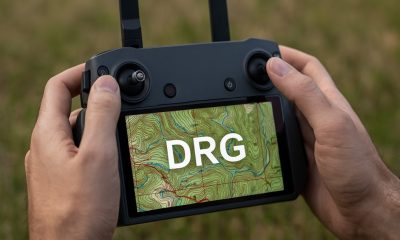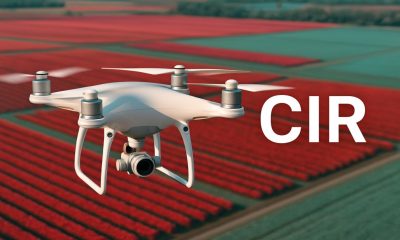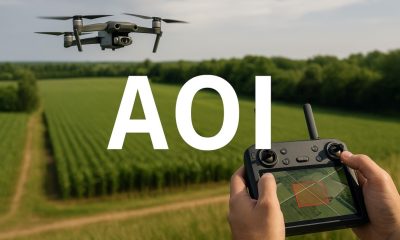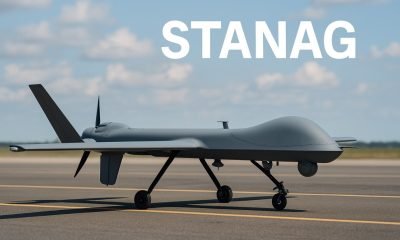- Acronym Guide
- AAM
- ABS
- AC
- ACAS
- ADS-B
- AFAC
- AGL
- AI
- AIM
- ALS
- AM
- AMA
- ANSP
- AOI
- APPI
- AUV
- AUVSI
- ARPAS-UK
- ASTM
- ATC
- BVLOS
- CAA
- CAAC
- CAB
- CASA
- CATT
- CBO
- CBR
- CBRN
- CDMA
- CDR
- CFR
- CIR
- COA
- COMINT
- CORS
- COTP
- COTR
- CPTED
- CV
- C2
- DAA
- DEM
- DFI
- DFS
- DGCA
- DHS
- DOD
- DPA
- DPEs
- DRG
- DRO
- DSM
- DSMX
- DSP
- DSSS
- DTM
- EASA
- EFT
- EO
- EOD
- EO/IR
- ELINT
- EMI
- ESC
- EVLOS
- eVTOLs
- FAA
- FCC
- FCS
- FHSS
- FICCI
- FLIR
- FOB
- FOV
- FPS
- FPV
- GBDAA
- GCP
- GCS
- GDPR
- GML
- GNSS
- GPS
- GSD
- GVC
- HDR
- HOGE
- IACRA
- ICAO
- ICS
- IMU
- INS
- IR
- ISA
- ISR
- ITU
- JARUS
- LAAMS
- LAANC
- LAATM
- LAI
- LBA
- LIDAR
- LOS
- LSALT
- MAC
- MAVLink
- MLIT
- MMS
- MSL
- MTOM
- NDAA
- NCSL
- NFZ
- NIST
- NMEA
- NOTAM
- NPA
- NPRM
- NTIA
- OEM
- OFDM
- OOP
- PASM
- PAV
- PCV
- PdM
- PEC
- PIC
- PID
- PIPL
- PLD
- PM
- PN
- PPK
- PPS
- PSM
- PWM
- UAM
- UAOP
- UAS
- UASTM
- UAV
- UCAVs
- UHD
- UHF
- USV
- UTM
- RAIM
- RCC
- RCS
- RFI
- ReOC
- RePL
- RMS
- ROI
- RPAS
- RPC
- RTH
- RTK
- SaR
- SAR
- SARP
- SBAS
- S.Bus
- SBIR
- SEDENA
- SfM
- SFOC
- SIGINT
- SLAM
- SMS
- SORA
- STANAG
- STTR
- sUAS
- TCAS
- TCCA
- TFR
- TIN
- TOF
- TP
- TPS
- TSA
- VHF
- VLOS
- VTOL
Drone Acronyms
What is RTH (Return-to-Home) & How Does it Work?
By
Jacob StonerTable Of Contents
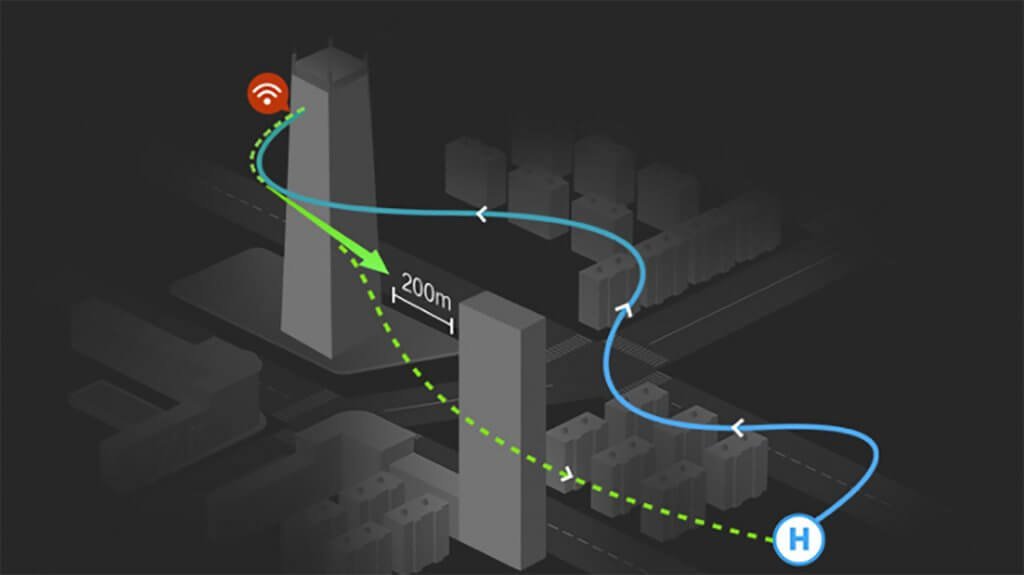
Definition
RTH stands for Return-to-Home. It is a feature in drones that allows them to automatically return to a pre-defined home location, typically the takeoff point, in case of low battery, loss of signal, or manual activation by the operator.
Relevance to the Industry
The RTH feature is essential for all drone operators, from hobbyists to professional users. It provides an added layer of security, ensuring that drones can return safely even if the operator loses control or the battery runs low. This functionality is particularly important in commercial applications such as aerial photography, surveying, and inspections, where the risk of losing a drone can be costly.
How Does Return to Home (RTH) Work?
Return to Home (RTH) is a safety feature found in many modern drones and unmanned aerial vehicles (UAVs) that allows the aircraft to automatically return to a predetermined home point. This feature is designed to enhance safety and prevent loss or damage to the drone. Here’s a detailed explanation of how RTH works:
1. Purpose and Importance
- Safety: RTH ensures that the drone can safely return to a designated home point in case of signal loss, low battery, or other emergencies.
- Convenience: Provides peace of mind to operators by ensuring the drone can autonomously navigate back to its starting point, reducing the risk of losing the drone.
2. Components Involved in RTH
- GPS Module: The Global Positioning System (GPS) module provides accurate location data, enabling the drone to determine its current position and navigate back to the home point.
- Flight Controller: The onboard computer that processes input from sensors, GPS, and user commands to control the drone’s flight path and stability.
- Compass: Helps determine the drone’s heading and orientation, essential for accurate navigation during RTH.
- Battery Monitoring System: Tracks the battery level and triggers RTH if the battery is too low to ensure a safe return.
3. Types of RTH Triggers
- Manual Activation: The operator can manually activate RTH through the remote controller or mobile app, instructing the drone to return to the home point.
- Signal Loss: If the drone loses connection with the remote controller, it will automatically initiate RTH to return to the home point.
- Low Battery: When the battery level reaches a critical threshold, the drone will initiate RTH to ensure it has enough power to safely return.
- Failsafe Conditions: Other failsafe conditions, such as excessive distance from the home point or environmental triggers (e.g., high winds), can also activate RTH.
4. How RTH Works
- Home Point Setting: When the drone takes off, it records its initial GPS position as the home point. Some drones allow the home point to be updated during the flight, such as setting the current controller location as the new home point.
- RTH Activation: When an RTH trigger is activated (manual, signal loss, low battery), the drone begins the RTH process.
- Altitude Adjustment: The drone ascends to a preset safe altitude to avoid obstacles during the return journey. This altitude can be adjusted by the operator based on the flying environment.
- Navigation to Home Point: Using GPS data and its compass, the drone navigates back to the home point. It follows a direct path or predefined waypoints, avoiding no-fly zones or restricted areas.
- Descent and Landing: Upon reaching the home point, the drone begins its descent and lands safely. Some drones use vision sensors or landing cameras to detect and avoid obstacles on the ground, ensuring a precise and safe landing.
5. Applications and Use Cases
- Recreational Flying: Hobbyists use RTH for added security, ensuring their drones return safely after flights.
- Commercial Operations: Businesses conducting aerial photography, surveying, and inspections rely on RTH to safeguard their equipment and ensure mission completion.
- Search and Rescue: In emergency scenarios, RTH can bring drones back safely, preserving crucial data and equipment.
- Agriculture: Farmers use drones for monitoring crops, and RTH ensures the drone returns safely after completing its tasks.
6. Advantages and Challenges
- Advantages:
- Enhanced Safety: RTH significantly reduces the risk of losing the drone due to signal loss or low battery.
- User Convenience: Simplifies the operation, allowing users to focus on the mission without worrying about navigation back to the starting point.
- Data Security: Ensures that valuable data collected during the flight is safely returned.
- Challenges:
- Obstacle Avoidance: While many drones have obstacle detection, not all RTH systems are perfect, and the drone might not always avoid obstacles effectively during the return flight.
- GPS Dependency: RTH relies heavily on GPS; poor GPS signal can affect the accuracy of the return path.
- Altitude Settings: Incorrect altitude settings during RTH can lead to collisions with obstacles.
7. Technological Advances
- Enhanced Obstacle Avoidance: Newer drones are equipped with advanced obstacle detection and avoidance systems using vision sensors, LiDAR, and ultrasonic sensors to navigate safely during RTH.
- Improved GPS Accuracy: Advances in GPS technology, such as dual-band GPS and integration with other satellite systems (GLONASS, Galileo), improve the accuracy and reliability of RTH.
- Smart RTH: Some drones feature Smart RTH, which dynamically adjusts the return path based on real-time environmental data, ensuring a safer and more efficient return journey.
- Battery Management Systems: Improved battery monitoring systems can better predict the remaining flight time and initiate RTH earlier to ensure a safe return.
Understanding how Return to Home (RTH) works highlights its critical role in enhancing the safety and reliability of drone operations. By leveraging GPS data, flight control systems, and real-time monitoring, RTH ensures that drones can autonomously navigate back to their starting point, reducing the risk of loss and improving the overall user experience.
Example in Use
“When the drone’s battery level dropped below 20%, the RTH feature was activated, and the drone automatically flew back to its takeoff point for a safe landing.”
Frequently Asked Questions about RTH (Return-to-Home)
1. How does the RTH feature work in drones?
Answer: The RTH feature works by using the drone’s GPS system to record the takeoff location as the home point. When the RTH function is triggered, the drone calculates the safest and most efficient path back to the home point, taking into account its current position and altitude. The drone then flies autonomously back to the home point and lands safely.
2. When is the RTH feature typically activated?
Answer: The RTH feature is typically activated in the following scenarios:
- Low Battery: When the drone’s battery reaches a critically low level, it triggers RTH to ensure it has enough power to return safely.
- Loss of Signal: If the drone loses communication with the remote controller, it will automatically initiate RTH to avoid getting lost.
- Manual Activation: The operator can manually activate the RTH feature at any time via the remote controller or mobile app.
- Failsafe Conditions: In case of any other failsafe conditions detected by the drone’s systems, RTH can be triggered to ensure a safe return.
3. What are the benefits of the RTH feature in drone operations?
Answer: The benefits of the RTH feature in drone operations include:
- Enhanced Safety: Ensures the drone can return safely in case of low battery, signal loss, or other emergencies.
- Loss Prevention: Reduces the risk of losing the drone by providing a reliable method for it to return to the home point.
- Operator Convenience: Provides peace of mind to operators, knowing that the drone can autonomously return if needed.
- Operational Reliability: Increases the overall reliability of drone operations, particularly in complex or high-risk environments.
For examples of these acronyms visit our Industries page.
As the CEO of Flyeye.io, Jacob Stoner spearheads the company's operations with his extensive expertise in the drone industry. He is a licensed commercial drone operator in Canada, where he frequently conducts drone inspections. Jacob is a highly respected figure within his local drone community, where he indulges his passion for videography during his leisure time. Above all, Jacob's keen interest lies in the potential societal impact of drone technology advancements.


